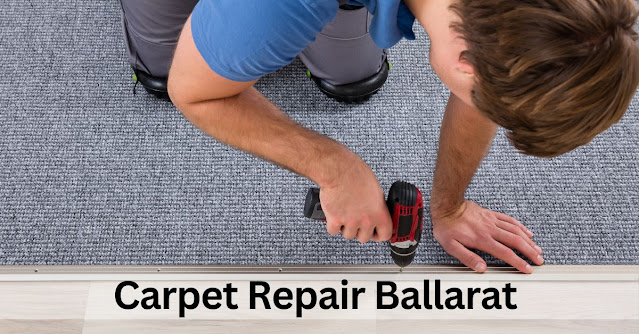How to Match the Carpet for Repair: A Comprehensive Guide
- Get link
- X
- Other Apps
Carpets, while they add warmth and comfort to our homes, are not immune to the wear and tear of everyday life. Stains, tears, and faded spots can quickly diminish the overall appeal of your carpet. But before you consider replacing your entire carpet, you might be surprised to learn that you can often repair it to its former glory. This guide will walk you through the process of matching your carpet for repair, making it look as good as new.
1. Assess the Damage
The first step in any carpet repair Truganina project is to assess the extent of the damage. Different types of damage require different approaches. Common issues include burns, stains, pet damage, and loose or frayed fibers. By identifying the specific problem, you can choose the most suitable repair method.
2. Gather Your Materials
To effectively match and repair your carpet, you'll need a few essential tools and materials. These may include:
- A matching piece of carpet or carpet remnants
- Carpet adhesive
- Carpet knife
- Seam tape
- Carpet thread and needle
- Carpet padding (if necessary)
3. Find a Matching Carpet
If you have a leftover piece of the same carpet from the initial installation, this is the ideal option. However, if you don't have an exact match, you can check with the carpet manufacturer or retailer to find a similar carpet style, color, and texture. It's essential to get as close a match as possible to ensure a seamless repair.
4. Prepare the Damaged Area
Before you start the repair, clean the damaged area thoroughly. Remove any loose dirt, debris, or stains. Ensure that the area is dry and free from any contaminants.
5. Cut Out the Damaged Section
Using a carpet knife, carefully cut out the damaged section. Be precise in your cutting to create a clean and even edge. Make sure the cut is straight and neat to facilitate a seamless repair.
6. Prepare the Replacement Piece
If you have a matching piece of carpet, cut it to the same size and shape as the section you removed. Make sure it's a perfect fit. If the replacement carpet is slightly larger, you can trim it to fit precisely later.
7. Install the Replacement
Apply carpet adhesive to the bottom of the replacement piece and carefully press it into the empty space. Ensure that the nap of the replacement carpet aligns with the surrounding carpet. Use a rolling pin or your hand to press down and secure the carpet in place.
8. Seam the Edges
To make the repair even more seamless, use seam tape to join the edges of the new carpet piece with the existing carpet. This will help hold the carpet in place securely and prevent any fraying.
9. Blend the Colors
If there's a noticeable color difference between the new and old carpet, you can use fabric dyes to blend the colors. Test the dye on a small, inconspicuous area first to ensure it matches the surrounding carpet.
10. Finish with Trimming
Once the repair is complete, trim any excess carpet fibers with a carpet knife to make the edges uniform and tidy.
Conclusion
Repairing your carpet doesn't have to be a daunting task. By following these steps and taking the time to match your carpet carefully, you can restore your carpet's beauty and functionality. Remember that patience and attention to detail are key to achieving a seamless and unnoticeable repair. With the right materials and a bit of effort, you can extend the life of your carpet and keep it looking as good as new.
- Get link
- X
- Other Apps



Comments
Post a Comment